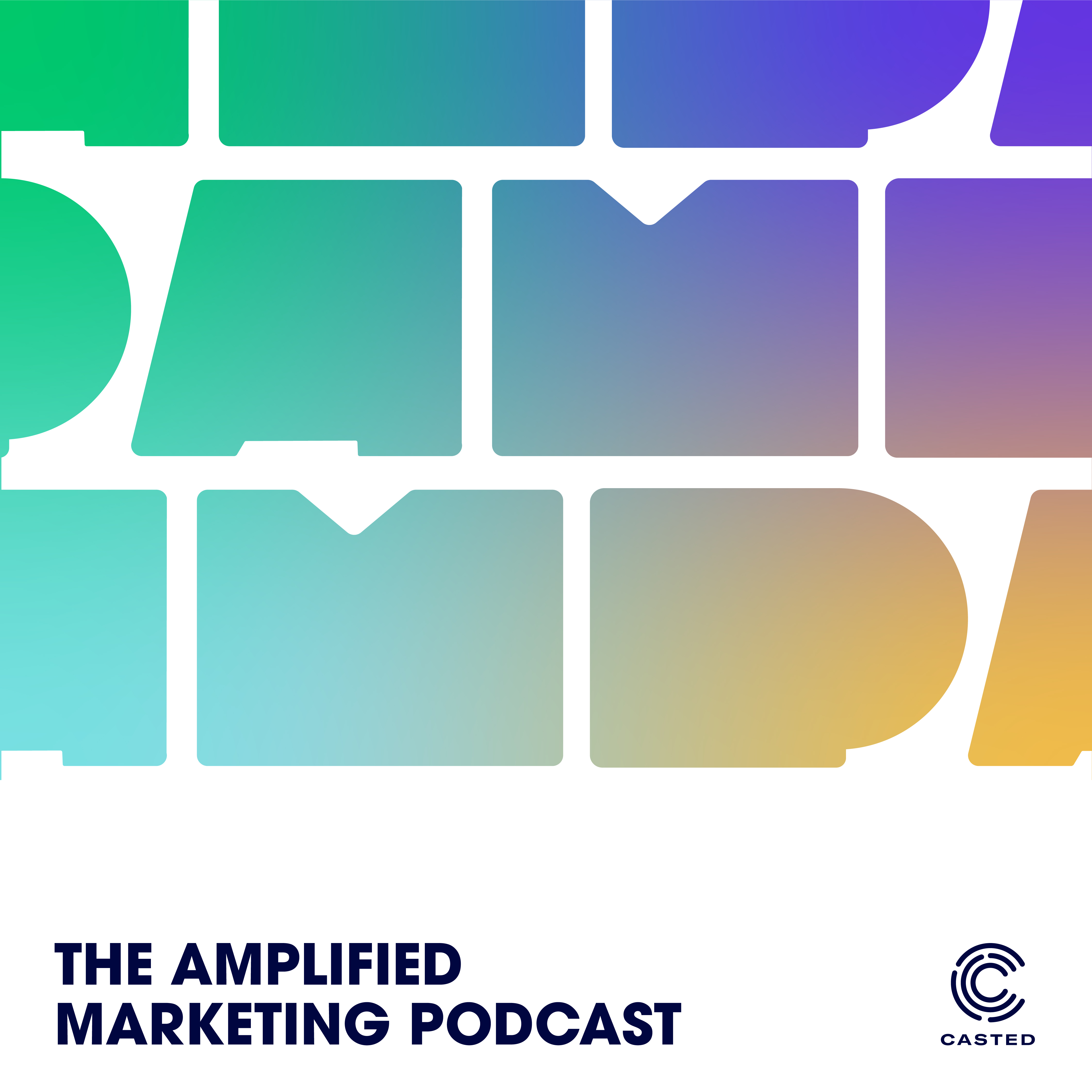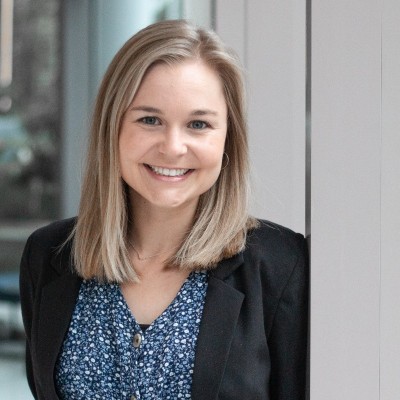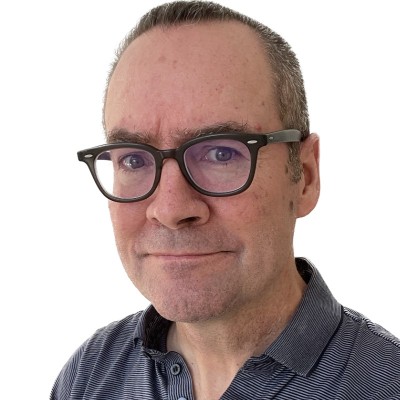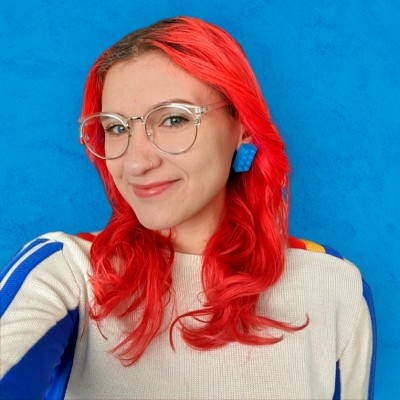How B2B Podcasts Grow Up: Building the Foundation for Growth
- 0.5
- 1
- 1.25
- 1.5
- 1.75
- 2
Lindsay Tjepkema: Up to this point in the Podcast Maturity Curve Series, you've learned how to plan and launch a show, distribute it to your audience, and grow your listener base and in turn, your business. All powerful lessons for beginners and experience podcasters alike. But how do you transition from a standalone audio show to all strategy, one that leverages your audio in different formats and meets your diverse audience where they are and leverages things like video too? Welcome to stage four of the Podcast Maturity Curve, multichannel expansion, where we go even deeper into scaling a show beyond a simple RSS feed. I'm Lindsay Tjepkema, a lifelong marketer and proud CEO and co- founder of Casted, the B2B marketing platform for brand podcasters. And I've teamed up with experts across the top sales and marketing teams in the world to detail each of the five stages of this maturity curve and what you can do to launch and grow a show with confidence. This is how B2B podcasts grow up, an original series from Casted. So you've built a loyal following, you're consistently putting out great content, and your listeners can't get enough. Good on you. Most podcasters don't get remotely close to this stage. Shout out to pod fade. Am I right? Give yourself a big old pat on the back for your hard work. You've earned it. But if you're ambitious, daring, and brave, you want to take your show to the next level. You want to reach new audiences and grow your business. Well, that's exactly why we are here, to talk about multichannel expansion and what it's all about. And we've brought in some experts to give their 2 cents, or let's be honest, it's a whole lot more than 2 cents. Think of it this way, your podcast is like a bakery full of delicious cakes and pastries. Okay, just picture that with me for a minute. Yum. Each platform is a different pastry. Say, TikTok is like a cookie. Your email newsletter, a croissant, the ones with the chocolate inside, and LinkedIn is like a decorated cake, might be my favorite. Twitter, Instagram reels, YouTube, your blog, Spotify, the menu is endless. And the beauty is your customers don't have to choose every single thing. Instead, they get to pick and choose what makes them the happiest. By sharing different plates and different goodies of all shapes and sizes and different tastes, you'll be able to serve more people because some people, oddly enough, enjoy different flavors. They prefer different tastes than what you may assume that they do. It's good to have that reminder, and Kira Singer says, " It's wise to start your show. With all of this in mind."
Kira Singer: We were like, " Let's make it flexible so as our media grows, it can grow with us." So we thought about, we're not doing a podcast, but we might one day. And so we kind of started adding microphones that would work for podcasting and for webinars. We got a teleprompter, we got some cameras. So, that's kind of how this started. And then we are challenged to, now we have the studio, we've been doing webinars. But what are we going to do in addition to that since we made this investment? And that's kind of where the podcasting conversation came about. We had this goal to kind of do this before we even started podcasting. So when the pandemic hit and we started doing so many webinars, we have a lot of time invested in these, how do we get more out of them? And that's when this epiphany box idea came, it was kind of like, " What can we get out of each thing and what can we promise speakers they'll get every time?" So they'll get the recording, they'll get usually an edited version that's shorter, and then a transcript. And it started with just the transcript, and then they'll get sent out in an email. And so as we found Casted and the ability to amplify was one, made easier, and two, quicker, we were like, " We can add transcripts, we can add a blog, because you can just take the transcript and key takeaways, playlists, and all these things that we can do. And it really just stems from honestly like being a small team, and how can we get the most bang for our buck?
Lindsay Tjepkema: So while you should definitely start with investing in your actual podcast on Spotify, Apple Podcasts, YouTube, other podcast platforms, there are so many other platforms out there that you could be taking advantage of, each with its own unique audience, its own flavor. This all sounds great in theory, but you're probably thinking it'll take a lot of extra work to bring on all these extra different platforms and expand your show beyond the wildest dreams. That sounds like a lot of work, and I totally get it. But the good news is, there are others who have done this before, and you get to learn from them. Like Peter Mahoney, the General Manager of Marketing Performance Management at Planful. He compares content marketing with a small team versus a larger team.
Peter Mahoney: I was the CMO of about a$ 2 billion software company, so we had lots of resources. And it was lots of production teams and people who could do stuff, so it was actually relatively easy to show up, and people would tell me a general direction of what to say, and we had a video series. And it was really pretty straightforward to do, and it was a lot of fun. It was a grind to do that as a CEO whose marketing department didn't really want to do this because it was yet another thing that was supposed to do. And oh, by the way, the benefit sometimes takes a while to see.
Lindsay Tjepkema: Yes.
Peter Mahoney: Because you really need to invest over a period of time. You need to build a body of work, you need to create some publishing consistency so people will hear it and get used to it and expected at some point. So that's why I really, for a long time, I was by myself with some really very small, useful outsource capability to get me up and going on the production side. And that was it. But having that consistency, so even at a small side and Planful as sort of a mid- size software company and doing it a very, very large software company, different perspective. But the same kind of thing, where you really need to keep at it. You need to promote it, both internally, as Rowan said, and externally, so people really get to the point. And it builds in value over time, as you continue to put it out there.
Lindsay Tjepkema: Compare planful's approach with near unlimited resources to something that's a little bit different, like Oak Street Fundings. Kira Singer and her team saw during the great resignation teams were turning over at a rapid rate. Maybe you saw that too. She decided, why not hire someone outside the company that will be available indefinitely to manage the show? So, that's why she hired a voice actor to be the face voice of their podcast.
Kira Singer: We started using her as our podcast host, and now we've kind of launched into, she's doing voiceover for videos, she's hosting our webinar, so we've really brought her on for even more things. I mean, we're experiencing turnover, I'm sure everyone is experiencing turnover. And I just couldn't imagine if in the middle of the podcast, our host left and we had to start from scratch. Old podcasts that had been produced but hadn't been shared would kind of be, " What do we do with them?" So it was great from that standpoint. It's also just a consistent voice that once we maybe start doing marketing videos and things like that, the voice should be recognizable at Oak Street Funding.
Lindsay Tjepkema: In the second episode of stage four of the Podcast Maturity Curve Series, you'll learn more about how to scale your show. But if you haven't listened to each stage up to this point, I'll leave you with one last piece of advice from Meg Johnson, who is the Senior Manager of Creative Strategy at OpenView Venture Partners. And she's pretty great. She reminds us that while you grow your show, it's easy to get caught up in the fame, the bright lights, the paparazzi, I'm just kidding. None of that exists in podcasting. We all know that. Don't expect to land in front of People Magazine after eight episodes of your new show. But in all seriousness, you must avoid shiny objects as you grow. That's why Meg recommends maintaining your show's authenticity. Because without the core foundation of a trusted relationship between you and your audience, it's impossible to grow.
Meg Johnson: The idea of branding a person within an organization to elevate the organization's overall brand awareness is nothing new. We see it all the time in influencer branding. But normally, it's kind of gross and artificial. So, what makes a good brand? Building personal brands doesn't have to come with huge egos, the over the top paid partnerships with Fabletics, the Tummy Tea, or the RGB room lights. I believe that the best way to build a brand is through authenticity and trust. First, let's look at the definition for authenticity. Authenticity is the daily practice of letting go of who we should be and embracing who we truly are. So what does that mean, and how do we do that with content? The best way to build authenticity for your brand or your personal brand is to focus on what people are most excited to talk about. Harnessing that enthusiasm is the best way to get engaged in content. Like I said, people care about what other people care about. Having that common interest point to get excited about builds that relationship in an authentic way and makes people coming back to say, " Hey, what is my friend Meg up to? And can we talk about roller skating or sloths sometime soon?" Hell yeah. Your audience should feel like you are best friends with them, without even ever having to meet you. That's the beauty of the internet and content.
Lindsay Tjepkema: Lead with trust and authenticity, and your audience will love you. It's true. It's the content and you they're listening for, not just the lessons that they can take back to their career or their personal life. They're listening for you.
Meg Johnson: When I think about what is authenticity, it really is just that your intentions are clear, you're coming across as you intend, and people really trust that. So it's really authenticity, trust, intent. And I think those things together are scalable, because if you're being true to yourself, you're being true in your intentions, why can't you scale that? When you think about how to scale that, there is no one size fits all answer. I think with any sort of personal brand or any product you think about, that viral growth loop of word of mouth and really getting something to spread authentically, naturally, sustainably is really going back to the intentions or the core of what is connecting these people. What is the true value you're bringing? And so I kind of like to think about not that people are products, but how do I solve that pain point or find that common experience or memory that we can connect on to build that relationship so that way, thousands or hundreds or whatever you want to say, followers down the road, they still feel just as included as the day that they subscribe to you because it is a relationship that you're growing. It's a community building, it's not just a transactional, all right, now you're subscribed. Now head to the back of the line. I need to get myself in front of more people.
Lindsay Tjepkema: Scale your authenticity, scale your audience relationship, scale your show. They all work together. Thanks for tuning in to the first episode of stage four of the Podcast Maturity Curve Series. And thanks to our expert guests for sharing their podcasting and content marketing expertise with us. Kira Singer, Meg Johnson, and Rowan inaudible. If you want to hear more from any of them individually, check out our full conversations linked in the resources below. Until the next episode on expanding Your Show and going well beyond the RSS feed, I'm Lindsay Tjepkema.



DESCRIPTION
Before you learn the ins and outs of expanding your show from a single RSS feed to a full-blown content marketing engine and podcast network, get the scoop from those who’ve done it before you.
Learn about the team they built to support their strategy, the vulnerability, and authenticity it requires to truly connect with your audience, and yep, even the mistakes they made in growing their shows.
Hear from these experts Meg Johnson from OpenView Venture Partners, Kara Singer of Oak Street Funding, and Peter Mahoney at Plannuh in the opening episode of the fourth stage of the podcast maturity curve series How B2B Podcasts Grow Up.
Today's Guests

Kira Singer

Peter Mahoney

